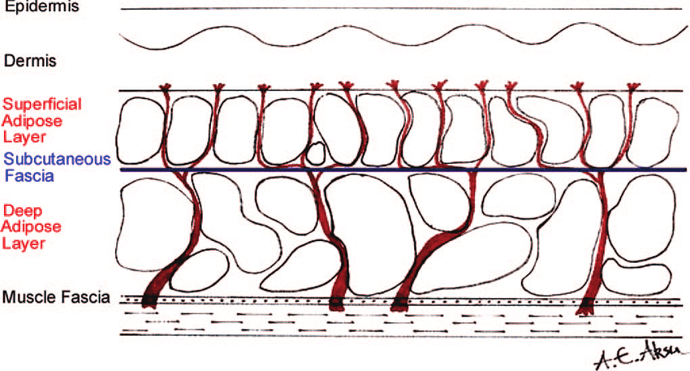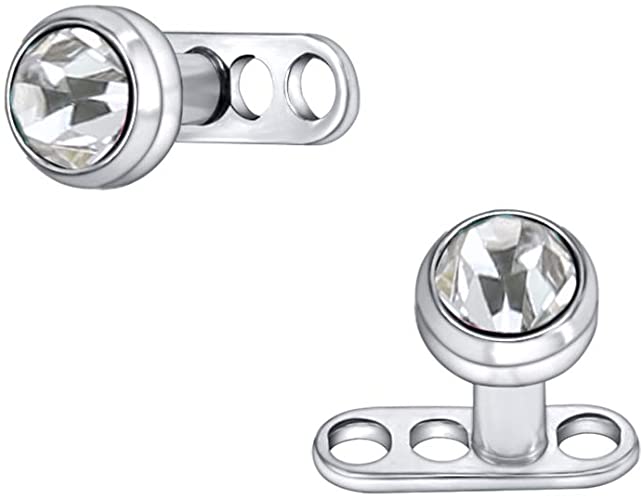I do like this:
But mostly as a “sanity check”.
Chicken skin is less than 1mm thick.
The depth you’ll end up placing that e-paper will probably be between 1 and 4mm deep.
This obviously depends on where in the body you’ll set that and a bunch of other factors…
This diagram gives you an Idea:
Between Epidermis and Dermis you would end up with wounds that are trying to close themselves. Think the body Identifying a foreign body and actively fighting to push it out.
So for a large implant the highest surface level you want to target would be the “Subcutaneous Fascia”, in blue above.
That region allows for a pocket to be formed which should reduce the risk of rejection.
Another consideration is blood flow. Given that you have a large surface implant you need either to set it deep enough that new blood vessels might form on top of it (which might even mean the actual muscle fascia, in black above, depending on placement and implant), or you need to add in some strategical holes, such as these:
That’s a default microdermal /dermal hook piercing. those holes are designed so that the 2 layers of skin can reconnect, helping both circulation and locking the piercing in place.
also, using the opportunity, if you have an implant which is very thin and very flat… it will probably act like a knife and just keep on migrating and separating the skin tissues, especially if implanted in the muscle fascia, where the loose connectivity tissue is really easy to come undone.
So one way or another we should include some hooking surfaces/holes as part of the screen design.
Ok, why was I saying all that?
A: because I talk too much
but also…
B: because the chicken skin might be a great first attempt, but it’s still only 0,5mm thick at most, while implanting on your shoulder might mean you got around 2,5mm of skin there.
So if the chicken skin works, I would try and get a slice of pork belly with skin and give that a go.

